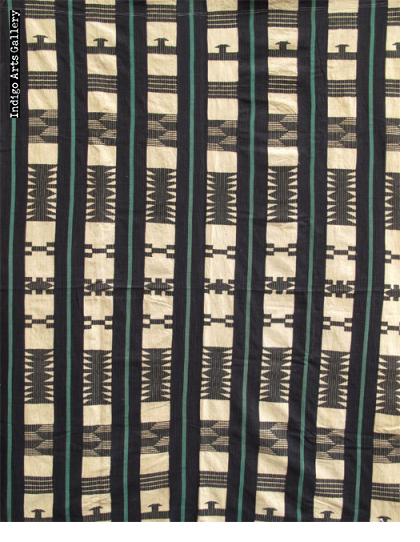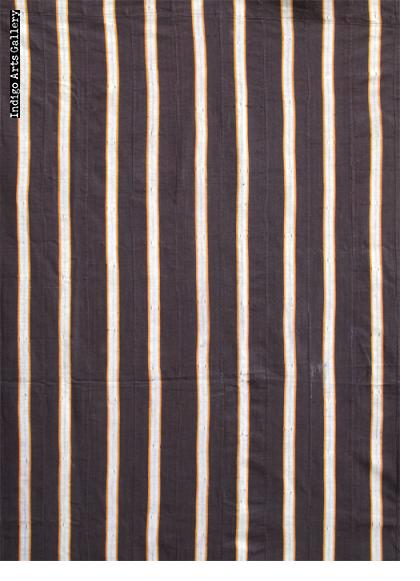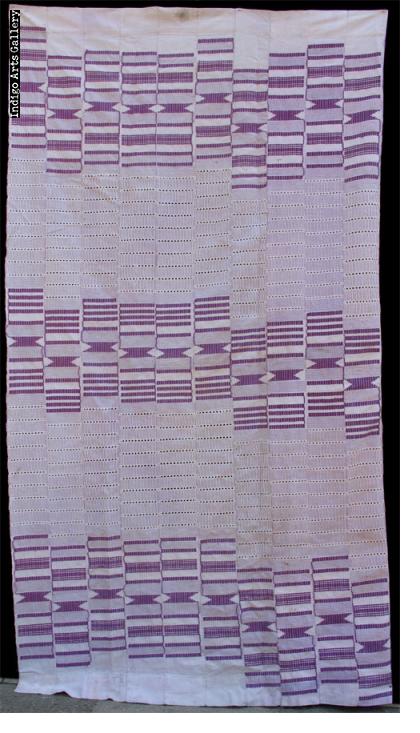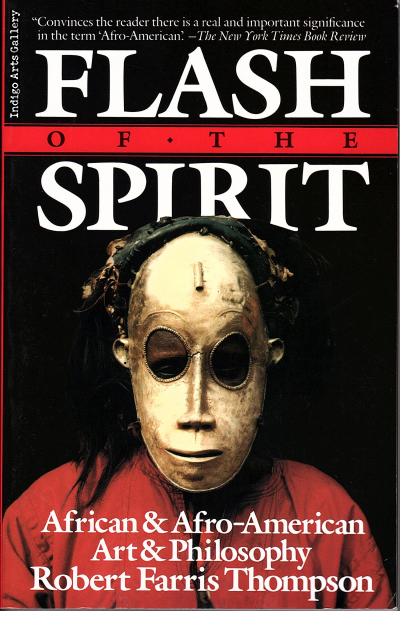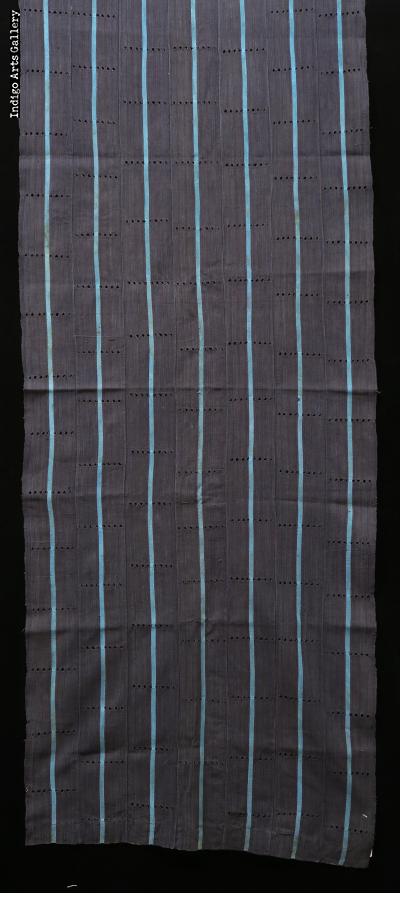Ashoké (aso oke) is the most prestigious hand-woven cloth of the Yoruba people of southwestern Nigeria. The name literally means "top cloth". While single pieces of ashoke are sometimes worn on a daily basis, complete ashoke outfits are worn during major ceremonies such as weddings, funerals, naming ceremonies and important religious festivals. The men wear ashoke in the form of agbadas (a three-piece outfit consisting of pants (shokoto), an embroidered pull-over shirt (dashiki), and a large pull-over robe (agbada). the women wear it in the form of head ties (gele), blouses (buba), and sarong skirts (iro). Traditionally, it was woven from three materials - cotton, a red imported silk called alari, and a domestic wild raw silk called sanyan. Today these materials are often replaced by rayon and metallic lurex.
What traditionally gave ashoke its prestige was not only its beauty but people's knowledge of how costly, difficult and time consuming it was to produce. For instance, the traditional indigo colored ashoke often required that the hand-spun thread be dyed up to fourteen times to achieve the deep blues desired. Furthermore, special techniques had to be used to make the threads colorfast so that they would not damage the lighter colored threads or embroidery when washed. The wild raw silk ashoke called sanyan required that thousands of moth cocoons be collected and their silk carefully unraveled and spun into thread. These types of labor intensive activities were common prerequisites before the actual weaving and hand embroidering could begin. When selling ashoke, market women will often discuss in detail the cost and effort required in making a specific piece and will compare and contrast it with others.
Technically, ashoke is what is known as a double-heddle narrow loom men's weave (although in some parts of Yoruba land it is woven by women). The cloth is made by weaving one forty foot or more four inch band of cloth. This long piece is then taken to a tailor who cuts it into pieces, sews it together, and sometimes hand embroiders it.
By purchasing this cloth you are not only acquiring a rare, one-of-a-kind piece of cloth from a very famous West African weaving tradition. You are also encouraging weavers to maintain the skill and knowledge necessary to continue this art form.
Above text courtesy of Robert Clyne.

